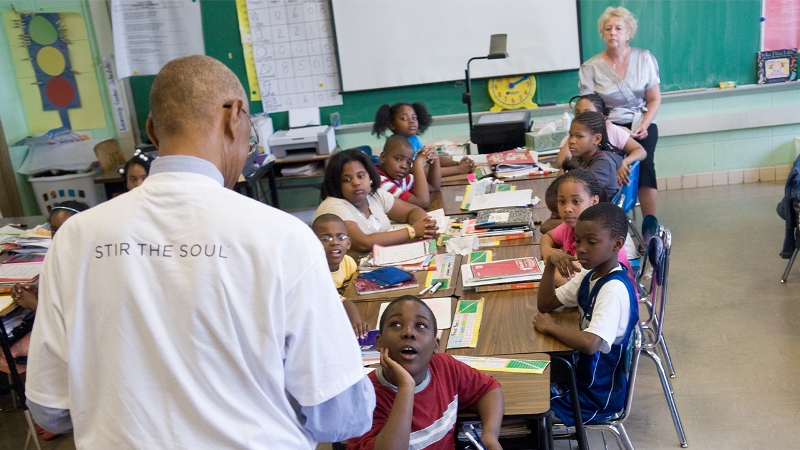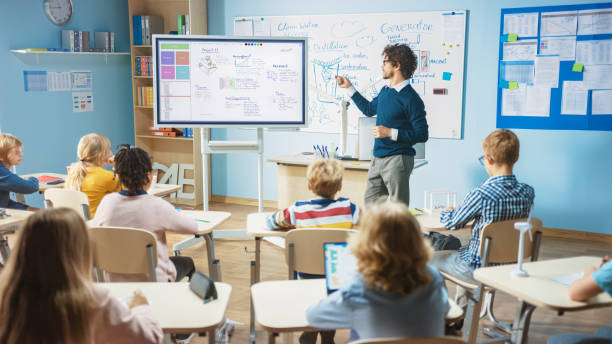Boost Your Child’s Confidence with Primary Science Tuition Singapore
Wiki Article
A Comprehensive Guide to the Various Learning Methods in Primary Scientific Research Direction
The expedition of diverse learning approaches in main science instruction presents a possibility for instructors to improve student involvement and understanding substantially. By checking out hands-on understanding methods, inquiry-based techniques, and collaborative approaches, we can determine efficient practices that accommodate numerous finding out styles. Additionally, the assimilation of modern technology and distinguished instruction plays an essential function in promoting an inclusive setting. Nevertheless, the inquiry stays: how can these approaches be properly applied in the classroom to optimize their effect? The solution hinges on a more detailed assessment of each strategy and its effects for teaching scientific research.
Hands-On Learning Strategies
Hands-on understanding techniques play an essential duty in primary science direction, involving pupils in energetic expedition and experimentation. These techniques permit students to interact directly with phenomena and materials, promoting a much deeper understanding of scientific concepts. By utilizing manipulatives, versions, and real-life experiments, teachers develop a setting where pupils can observe, assume, and test their concepts.Such strategies not just boost understanding yet additionally grow critical thinking and analytical abilities. When trainees take part in activities like building easy devices, planting seeds, or performing chain reactions, they are motivated to ask concerns and look for solutions via their very own observations. This experiential approach aids to debunk intricate clinical principles, making them more available and relatable.
Furthermore, hands-on learning advertises partnership among peers, as students frequently operate in teams to carry out experiments or share searchings for. This synergy not only improves their discovering experience however likewise develops crucial social abilities. Ultimately, incorporating hands-on methods in primary scientific research instruction cultivates a long-lasting love of discovering and curiosity concerning the natural globe, laying a strong structure for future academic searches in science and beyond.
Inquiry-Based Learning
Inquiry-based discovering is an instructional strategy that encourages pupils to ask questions, explore phenomena, and construct their very own understanding of scientific ideas. This approach shifts the emphasis from traditional teacher-led direction to an extra student-centered experience, where learners take the effort in their educational journey. By promoting inquisitiveness, inquiry-based knowing advertises much deeper engagement with the material, permitting trainees to discover subjects in a significant context.In method, this strategy frequently includes hands-on experiments, monitorings, and critical thinking tasks that align carefully with the clinical approach. Trainees are urged to formulate hypotheses, style examinations, and assess information, which grows essential skills such as analytical and analytical reasoning. The function of the teacher in this framework is to assist in exploration, assisting trainees with the query procedure while urging independent idea and collaboration.
Moreover, inquiry-based learning nurtures a feeling of possession over the understanding procedure, inspiring trainees to go after expertise proactively. This technique not only enhances understanding of clinical ideas however likewise fosters a lifelong love for knowing, furnishing students with the skills essential to browse a significantly complicated world.
Collaborative Knowing Approaches
Collective learning techniques empower trainees to participate in meaningful communications with peers, fostering a shared obligation for their instructional outcomes. In main scientific research instruction, these methods urge learners to collaborate to explore scientific principles, solve issues, and carry out experiments (primary science tuition Singapore). By joining group activities, trainees can utilize varied point of views, permitting richer understanding and retention of clinical knowledge
One secret element of collective understanding is the focus on interaction skills. Students must verbalize their thoughts, pay attention proactively to others, and bargain concepts, every one of which are crucial proficiencies in both scholastic and real-world contexts. This social communication not only enhances their understanding of clinical concepts yet additionally advertises synergy and problem resolution abilities.
In addition, joint learning frequently causes increased motivation and interaction. They are much more likely to take possession of their understanding journey when trainees see the value of their payments within a team. Teachers can promote browse around here this procedure by creating structured group jobs that line up with curriculum goals while giving advice on efficient collaboration strategies. Generally, integrating collaborative understanding techniques in primary scientific research instruction grows a dynamic learning atmosphere that prepares students for future scholastic and social difficulties.
Technology Assimilation in Science
The combination of modern technology in main scientific research instruction improves finding out experiences by providing cutting-edge devices and resources that sustain numerous teaching methods, consisting of collaborative knowing - primary science tuition Singapore. Using electronic platforms, simulations, and interactive applications enables trainees to involve deeply with clinical concepts, promoting an extra hands-on approach to discoveringDigital research laboratories, for example, enable learners to carry out experiments why not try here securely and successfully, advertising inquiry-based learning. These tools can mimic real-world scientific situations, enabling trainees to picture intricate processes that would be challenging to replicate in a conventional classroom setting. Additionally, innovation fosters communication and collaboration among students, as they can share findings and function with each other on tasks with on the internet platforms.
Furthermore, multimedia presentations and educational video clips can improve lessons by accommodating diverse learning designs, making abstract ideas much more easily accessible. Information evaluation tools likewise equip trainees to collect and analyze scientific data, reinforcing critical assuming skills. Overall, the strategic incorporation of modern technology in main science guideline not only boosts interaction but additionally prepares trainees for a technologically advanced culture, furnishing them with important skills for future clinical endeavors.
Set Apart Direction Strategies
Separated instruction approaches are necessary for dealing with the varied needs of students in primary science education and learning. These techniques enable teachers to customize their teaching approaches to fit varying abilities, passions, and discovering designs within the class. By utilizing differentiated guideline, teachers can develop a comprehensive environment that promotes interaction and boosts understanding of clinical concepts.One effective method is to use versatile grouping, which enables trainees to team up with peers at comparable ability degrees or with varying viewpoints. This strategy encourages peer knowing and promotes important reasoning. In addition, supplying selections in jobs can encourage pupils, permitting them to pick tasks that reverberate with their passions while still fulfilling curricular purposes.
In addition, including tiered jobs is an additional useful strategy. By making jobs with varying degrees of intricacy, teachers can guarantee that all students are appropriately tested, despite their efficiency. Using formative assessments to gauge understanding more makes it possible for instructors to change their instructional methods dynamically, making certain that each student gets the assistance they require.
Eventually, executing set apart instruction strategies in key science education not just enhances trainee learning end results however additionally cultivates an interest for science, preparing pupils for future academic pursuits.

Verdict
In recap, efficient primary advice scientific research direction necessitates a complex technique that encompasses hands-on understanding, inquiry-based techniques, and collaborative strategies. The combination of technology and differentiated instruction additionally satisfies varied knowing designs, fostering a setting conducive to expedition and vital reasoning. By applying these methods, instructors can improve pupil engagement and understanding, ultimately nurturing a long-lasting passion for science and questions. Such comprehensive approaches are crucial for establishing educated and interested future scientists.The exploration of diverse discovering approaches in key scientific research instruction provides a chance for teachers to improve pupil involvement and comprehension substantially.Hands-on discovering methods play a crucial duty in key scientific research guideline, involving pupils in energetic expedition and trial and error.Inquiry-based understanding is an instructional method that encourages trainees to ask inquiries, explore sensations, and build their own understanding of scientific principles.Joint discovering approaches empower pupils to involve in significant interactions with peers, cultivating a common responsibility for their instructional results. In general, incorporating joint knowing approaches in key scientific research instruction grows a vibrant knowing setting that prepares trainees for future scholastic and social difficulties.
Report this wiki page